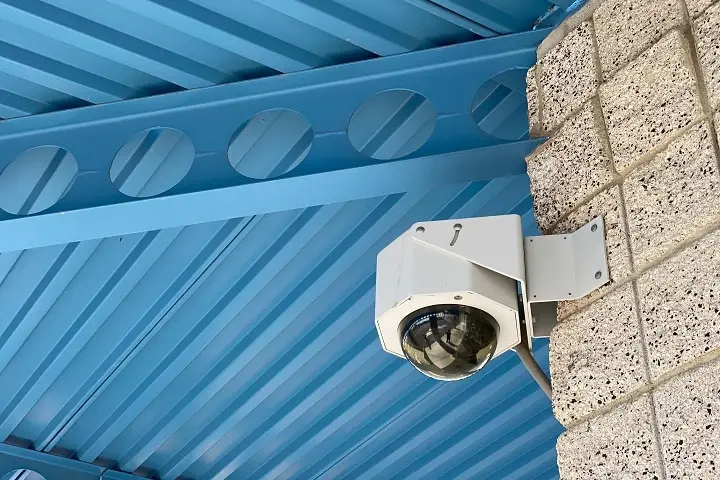
In an era where technology empowers homeowners, do-it-yourself (DIY) home security systems have gained immense popularity. Building your security system not only allows for customization but also provides an affordable alternative to professionally installed systems. This comprehensive guide will walk you through the process of setting up a robust DIY home security system, covering key components, installation steps, and tips for optimizing your security.
Assessing Your Security Needs:
Before diving into the DIY world of home security, it's crucial to assess your specific requirements. Consider the layout of your home, potential vulnerabilities, and the level of security you need.
-
Home Size and Layout:
- Evaluate the size and layout of your home to determine the number of sensors, cameras, and other components you may need.
-
Entry Points and Vulnerable Areas:
- Identify potential weak points, such as doors and windows, where extra security measures may be necessary.
-
Budget Considerations:
- Establish a budget to guide your DIY project. This will help you prioritize essential components without overspending.
Components of a DIY Home Security System:
Understanding the key components of a DIY home security system is crucial for effective planning and implementation.
-
Security Cameras:
- Choose cameras with features like high resolution, night vision, and a wide field of view.
- Place cameras strategically to cover entry points, outdoor spaces, and high-traffic areas.
-
Motion Sensors:
- PIR (Passive Infrared) sensors detect changes in infrared radiation caused by movement.
- Consider microwave sensors for larger areas, using microwave pulses to detect motion.
-
Door and Window Sensors:
- Magnetic contacts trigger an alarm when doors or windows are opened.
- Install these sensors on all accessible doors and windows.
-
Smart Locks:
- Enhance your security with smart locks that can be controlled remotely via mobile apps.
- Some smart locks integrate with other home automation devices.
-
Smart Lighting:
- Use smart bulbs or switches to simulate occupancy and deter potential intruders.
- Integrate lighting with motion sensors for added security.
-
Alarm Systems:
- Consider DIY alarm systems with loud sirens or silent alerts, depending on your preference.
- Some systems offer professional monitoring services for an additional fee.
-
Smart Home Hub:
- Choose a smart home hub to centralize control of your security devices.
- Popular hubs include platforms like SmartThings, Hubitat, or Home Assistant.
Planning Your DIY Home Security System:
With a clear understanding of your needs and the essential components, it's time to plan the layout and installation of your DIY home security system.
-
Create a Floor Plan:
- Sketch a floor plan of your home, marking entry points, vulnerable areas, and potential locations for cameras and sensors.
-
Decide on Camera Placement:
- Determine the best locations for security cameras to provide optimal coverage.
- Consider angles, potential obstructions, and the need for both indoor and outdoor cameras.
-
Strategically Place Sensors:
- Install door and window sensors at entry points and vulnerable areas.
- Place motion sensors in areas where intruders are likely to pass.
-
Integrate Smart Locks:
- Choose doors for smart lock installation and ensure compatibility with your chosen DIY system.
- Follow manufacturer instructions for installation and setup.
-
Connect Devices to a Smart Home Hub:
- Set up your chosen smart home hub and connect compatible devices.
- Follow manufacturer guidelines and utilize the hub's interface for device integration.
Installation Steps for DIY Home Security:
Now that you've planned your DIY home security system, let's walk through the installation steps for each component.
-
Installing Security Cameras:
- Mount cameras at planned locations using brackets or mounts provided by the manufacturer.
- Ensure a stable and secure installation, considering weather resistance for outdoor cameras.
-
Setting Up Motion Sensors:
- Follow manufacturer instructions for mounting motion sensors at the recommended height and angle.
- Adjust sensitivity settings to avoid false alarms triggered by pets or moving objects.
-
Attaching Door and Window Sensors:
- Install magnetic contacts on doors and windows according to the manufacturer's guidelines.
- Test sensors after installation to confirm proper functioning.
-
Installing Smart Locks:
- Replace existing locks with smart locks or install retrofit smart lock devices.
- Connect smart locks to the smart home hub and configure settings through the mobile app.
-
Integrating Smart Lighting:
- Replace existing bulbs with smart bulbs or install smart switches compatible with your chosen hub.
- Set up automation routines for lighting based on security preferences.
-
Setting Up Alarm Systems:
- Install the alarm system control panel in a central location with easy access.
- Test the alarm system to ensure proper functioning and responsiveness.
-
Connecting Devices to the Smart Home Hub:
- Follow the hub's instructions to connect each device to the central hub.
- Configure automation routines and rules for seamless device integration.
Tips for Optimizing Your DIY Home Security System:
To ensure the effectiveness of your DIY home security system, consider the following tips for optimization:
-
Regularly Test and Maintain:
- Test your system regularly to identify and address any issues promptly.
- Replace batteries in sensors and cameras as needed to maintain optimal performance.
-
Secure Your Wi-Fi Network:
- Implement strong passwords for your Wi-Fi network to prevent unauthorized access to your security system.
- Regularly update firmware for all connected devices.
-
Utilize Mobile Apps:
- Take advantage of mobile apps associated with your security devices for remote monitoring and control.
- Receive real-time alerts and notifications on your smartphone.
-
Integrate with Home Automation:
- Explore additional home automation features, such as integrating with smart thermostats, doorbell cameras, and smoke detectors.
- Create custom automation routines for enhanced security and convenience.
-
Consider Professional Monitoring:
- Some DIY systems offer optional professional monitoring services for an added layer of security.
- Evaluate the cost and benefits of professional monitoring based on your preferences.
Budget Considerations for DIY Home Security:
One of the key advantages of a DIY home security system is its affordability. However, it's essential to budget wisely to ensure you get the most out of your investment.
-
Upfront Costs:
- Calculate the total cost of purchasing security cameras, sensors, smart locks, and other components.
- Consider bundling deals or discounts offered by manufacturers.
-
Monthly Expenses:
- Some DIY systems may have optional monthly fees for professional monitoring services.
- Factor in any recurring costs associated with cloud storage or additional features.
-
Long-Term Savings:
- Compare the long-term costs of a DIY system to professionally installed alternatives.
- DIY systems often provide significant savings, especially if you can perform the installation yourself.
Conclusion:
Building a DIY home security system empowers homeowners to take control of their safety while customizing the setup to meet specific needs. By assessing your security requirements, selecting the right components, and following the installation steps outlined in this guide, you can create a comprehensive and cost-effective security solution for your home.
Regular maintenance, testing, and optimization are essential to ensuring the ongoing effectiveness of your DIY system. Stay informed about updates from device manufacturers, security best practices, and emerging technologies to keep your home security ahead of potential threats.
Investing time and effort in a well-designed DIY home security system not only provides peace of mind but also contributes to a safer and more secure living environment for you and your loved ones. As technology continues to advance, the DIY approach allows you to stay at the forefront of home security without breaking the bank.
FAQ's
What is a DIY home security system?
A DIY home security system is a security solution that homeowners can install and set up independently. These systems typically come with easy-to-follow instructions and are designed for self-installation without the need for professional assistance.
What components are included in a DIY home security system?
DIY home security systems commonly include components such as wireless cameras, door/window sensors, motion detectors, control panels, and alarms. Some systems may also offer additional features like smart doorbell cameras, smart locks, and environmental sensors.
How difficult is it to install a DIY home security system?
DIY home security systems are designed to be user-friendly, and installation difficulty can vary. Many systems use wireless technology, making installation straightforward with minimal tools required. However, the complexity may depend on the specific components and features of the chosen system.
Can I monitor a DIY home security system on my smartphone?
Yes, most DIY home security systems offer mobile apps that allow users to monitor and control their systems remotely using smartphones or tablets. This includes receiving real-time alerts, viewing camera feeds, and arming or disarming the system from anywhere with an internet connection.
Are DIY home security systems reliable?
The reliability of a DIY home security system depends on the quality of the equipment and the thoroughness of the installation. Choose reputable brands with positive customer reviews, and follow the provided instructions carefully. Regularly test and maintain the system to ensure its continued reliability.

